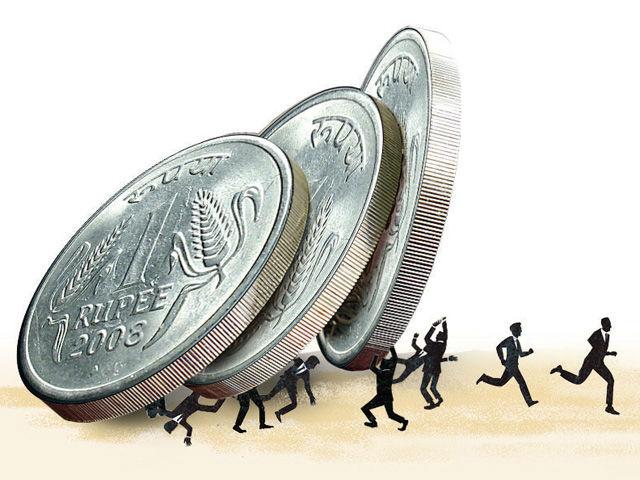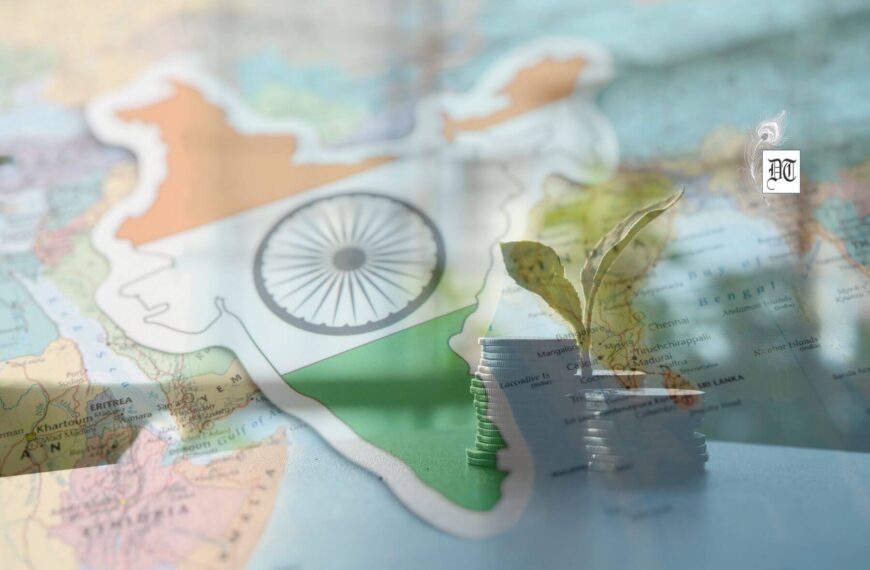The road ahead is bumpy for India’s growth story. Though India has been in a sweet spot umpteen times in the last couple of decades, its economy never grows to its full potential despite economic reforms, which are happening incrementally since 1991 and are irreversible. China, South Korea, and South East Asian countries, whose economies were more or less on par with India once, have leapfrogged, while India’s growth has been gradual and at times tottering despite democracy and good legal system. A report, for Different Truths.
The International Monetary Fund has forecast bullish GDP growth for India at 7.4 percent in 2018 as against 6.7 percent in the previous year. It forecast a better 7.8 percent GDP growth for 2019, making India the fastest growing economy again overtaking China, which is expected to slow down to 6.6 percent GDP in 2018 and 6.4 percent in 2019. Of course, India and China growth figures are not comparable in absolute terms. India is a mere $2.5 trillion economy while China is a huge $11 trillion. So even a ten percent growth will add $250 billion to Indian economy and a mere 5 percent growth in China will add $550 billion to the Chinese economy.
Nevertheless, it is a welcome development that green shoots are there in the Indian economy, that too after a series of economic blunders in the last few years, the major one being demonetisation that has had a long-term negative impact. But lately there are worrying signs as inflation is surging, the banking system is in doldrums due to a series of scams and massive sub-prime lending to unviable infrastructure projects, particularly in highways and power sectors in the last few years. Falling rupee is putting pressure on interest rates and widening current account deficit due to high global crude oil prices are making the economic situation no better. Index of Industrial production touched a five-month low at 4.4 percent in March. The performance of eight core infrastructure, which accounted for 40 percent of Industrial production output, was worse at 4.1 percent in March, a four-month low. After clocking double-digit growth for a few months, India’s exports growth has faltered and nosedived to 5.1 percent in March and trade deficit too has been widening on the back of rising global crude oil prices and falling rupee. India imports 80 percent of its oil requirement, which is only growing year after year. The overall exports growth in 2017-18 was somewhat better at around 10 percent after being in the negative territory in the previous years. Of course, India’s exports growth is nowhere near over 20 percent cloaked annually during 2004-11.
This being the scenario, the road ahead is bumpy for India’s growth story. Though India has been in a sweet spot umpteen times in the last couple of decades, its economy never grows to its full potential despite economic reforms, which are happening incrementally since 1991 and are irreversible. China, South Korea, and South East Asian countries, whose economies were more or less on par with India once, have leapfrogged, while India’s growth has been gradual and at times tottering despite democracy and good legal system. China too had the large population like India, yet in the last few decades, 600 million people have come out of poverty in that country. China has done remarkably well in education and healthcare. Not only it has achieved 100 per cent literacy, malnutrition has virtually been eradicated and the entire population has been adequately skilled to get gainful employment, be it farming, manufacturing or any other vocation.
Of course, the usual prescription is that India should not waste time in pushing exports reforms to take advantage of improving global trade and push infrastructure development besides improving ease of doing business to return to the high growth path.
These are stereotyped prescriptions. The issue is why India misses the bus all the time. Why is it not able to tap its potential fully to leap frog in growth just as other Asian emerging economies? The answer is simple: unbridled corruption at all levels, which makes it high cost economy. India may claim to have vibrant democracy but the political system makes the process slow and breads corruption, which percolates right up to the bottom most level. As a result, the so called cheap labour and demographic dividend can never be fully utilized or exploited. Why Aligarh known for its lock making, a cluster of small scale industry there for centuries, is not able to compete with China. The locks made in China thousands of miles away from work out to be cheaper in Delhi than locks made in Aligarh 100 miles away from Delhi. The reason is high cost. A small item like lock costing Rs. 50 is competitive when made in China despite high transportation cost and import duties. This is because labour is not only cheap but also better skilled improving efficiency manifold. China has a better infrastructure with electricity being cheap, more efficient and available round the clock. Also, taxes are low there and ease of doing business is much better.
In India, the cost of production is very high because of inspector raj and need to pay bribe right from policemen to local political leaders. Massive theft and line loss make electricity charges very high due to inefficiency. This is true of all manufacturing and services. Even road side vendors pay huge bribes to carry out their illegal business, which they recover by selling at higher prices. Also, elections, whether Parliament or Assembly elections every six months, central government or some state governments, make things dysfunctional most parts of the year. Frequent Local Bodies elections also contribute to the lack of administration during most part of the year. Former finance minister and BJP leader Jashwant Singh once said in Parliament: ‘improve governance and the rest will follow, be it economic growth or reforms. Prime Minister Narendra Modi promised in 2014 after coming to power that his government believed in ‘minimum government and maximum governance’ and development will be the main plank.
Four years down the line that seems to have not happened; not even a semblance of it. India may claim to be on a sweet spot and perhaps most attractive investment destination. In practice, India is far from it. Without some soul searching by all on where we have gone wrong, it will take centuries to catch up with other emerging Asian economies. The only mantra has to be end corruption and improve governance if the economy has to grow rapidly.
K R Sudhaman
©IPA Service
Photo for the Internet





 By
By

 By
By
 By
By